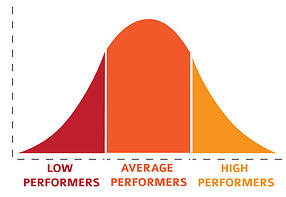SAT / ACT Prep Online Guides and Tips

You're probably curious about how you stack up against average SAT scores. But what is an average SAT score? There are lots of different ways to look at average SAT scores. How many types of averages are there, and which averages are important for you?
We'll discuss official results for all these questions—and more—and tell you which SAT average scores actually matters for your future.
So what is the average SAT score? That really depends on which group of people you're looking at. We'll look at national averages, averages by gender, by ethnicity, by family income, by high school type, and by state.
National SAT Average Score
For the new 2016 SAT, the College Board calculated SAT score percentiles for two groups: all 11th and 12th grade students (Nationally Representative Sample Percentiles) and college-bound students who typically take the SAT for the last time as 11th- or 12th-graders (SAT User Percentiles).For the Nationally Representative Sample, the national average SAT score was:
- Evidence-Based Reading and Writing: 510
- Math: 510
- Total: 1020
- Evidence-Based Reading and Writing: 543
- Math: 541
- Total: 1083
Disappointed with your scores? Want to improve your SAT score by 160 points? We've
written a guide about the top 5 strategies you must be using to have a
shot at improving your score. Download it for free now:
Get eBook: 5 Tips for 160+ Points
Get eBook: 5 Tips for 160+ Points
Average SAT Scores by Gender
Interestingly, the College Board also calculated the average SAT score by gender. These averages are based on college-bound members of the Class of 2016 who took the old SAT, which had three sections and was scored out of 2400:|
Gender |
Reading |
Math |
Writing |
Total |
|
Male |
495 |
524 |
475 |
1502 |
|
Female |
493 |
494 |
487 |
1479 |
As you can see, males outperform females on math by 30 points, while females exceed males on Writing by 12 points.
According to a statistical significance test (t-test), the difference in math scores is considered extremely significant (in technical terms, the P value is less than 0.0001, meaning roughly that it is very unlikely this difference is due to chance).
The difference between genders in math test scores has been explored by academic researchers and has been a controversial topic. It should be a goal of the educational system to close this achievement gap between genders.
For reference purposes, I’ve also converted these averages (rounded to the nearest actual score option—so 493 would be rounded to 490) to new SAT scores (out of 1600) using official score conversion charts.
|
Gender |
New Math |
Evidence-Based R+W |
New Total |
|
Male |
550 |
540 |
1090 |
|
Female |
520 |
550 |
1070 |
Average SAT Scores by Ethnicity
When registering for the SAT, the College Board allows students the option to specify their ethnicity. Most students do share their ethnicity, and the College Board has reported the average SAT scores across ethnicity. Again, these are scores on the old version of the test:|
Ethnicity |
Number Taking |
Reading |
Math |
Writing |
Total |
|
American Indian or Alaska Native |
7,778 |
468 |
471 |
447 |
1386 |
|
Asian, Asian American, or Pacific Islander |
196,735 |
529 |
602 |
534 |
1665 |
|
Black or African American |
199,306 |
430 |
425 |
415 |
1270 |
|
Native Hawaiian or Pacific Islander |
2,371 |
432 |
438 |
423 |
1293 |
|
Hispanic, Latino, or Latin American |
355,829 |
448 |
453 |
436 |
1337 |
|
White |
742,436 |
528 |
533 |
511 |
1572 |
|
Two or More Races, non-Hispanic |
28,460 |
511 |
505 |
488 |
1504 |
|
Other |
20,604 |
496 |
518 |
491 |
1505 |
|
No Response |
84,070 |
451 |
501 |
452 |
1404 |
|
Total |
1,637,589 |
494 |
508 |
482 |
1484 |
No comments:
Post a Comment